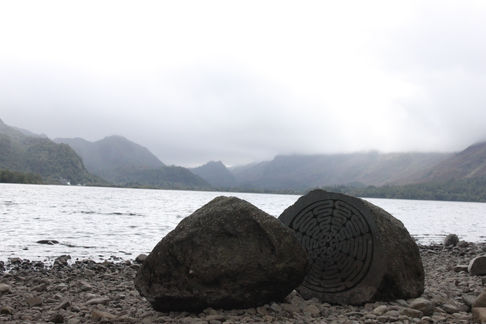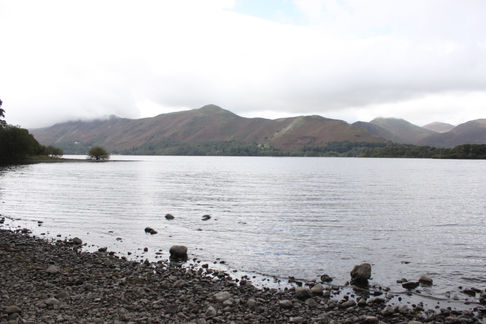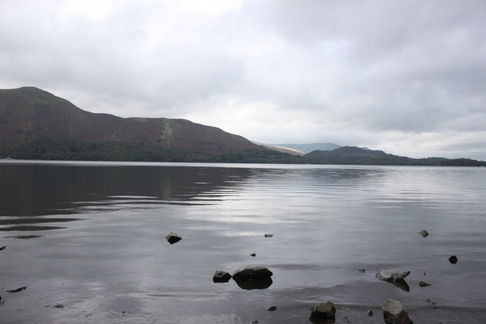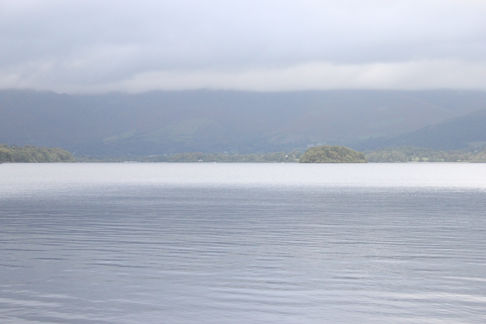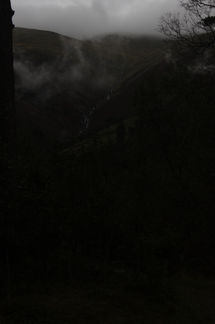.jpg)
JIM HOBBS
This first lecture on the critical forms of observation was a bit of an eye-opener. Of course, the process of observing is important to any artist, however, the intricacies of observing something in-depth and analysing its reason or effect is something I have never done. I have seen and understood, but I haven't really done much observing in order to seek inspiration.
Unsurprisingly, inspiration comes from everywhere, all the time. We are often attracted to engage with or by something that we like. In order to see be inspired by it, we have to observe it. Then we have to think about not just what we observe, but, what, how, where and when we are drawn to objects, landscapes or events as this will inevitably change the way we have observed those objects, landscapes, or events. In the case of the film 'Black Sun' - by artist Jim Hobbs, it seemed that he was drawn towards not just the Sun, but also the place on Earth where it's effect is arguably the strongest - Death Valley, CA. Similarly to Michel Chion's observations of sound and image, together creating a value that is largest than the sum of each, individually (horrible paraphrasing), Jim's Sun, as observed from the deserts and salt flats of Death Valley, through a 16mm camera, also produces an effect that is of more intrinsic value together rather than alone. He observed the Sun, as it followed its predictable, protocolic path parallel to the ground, not just with his own eyes but also with the eye of a camera.
What Jim saw when he observed the Sun through his 16mm film camera had to be different than what he saw without it, otherwise, apart from wanting to share it, what's the point? The difference in effect when filming on celluloid compared to digital is what I took away from the video. Though homogenous effects can be recreated in post-production for digital imaging, they lack a certain 'je ne sais quoi' - possibly a warmth? - that fails to correctly imitate the effect that light has on celluloid film. This is also true for audio, with regards to the myriad of analog emulators that claim to be as good as the real thing. Sometimes, it is as good as you need it to be. Sometimes, it can be better.
We were set a challenge to observe and document the weather in which we encounter ourselves for the next week. I had a trip booked to a town in northern England, Keswick, in the Lake District, to escape the cacophony of city life, and be immersed in nature and all that other good stuff. I, admittedly contradictory to the end of the paragraph above, am not a film purist and believe that you should use what you have access to. So, armed with an old and withered Canon 500D, I decided to walk around Keswick's local lake, Derwent Water, and document the weather as I followed the shore for 10 miles.
READING
Annie Dillard - Total Eclipse
In this text, Annie Dillard is recalling the moment she witnessed a total solar eclipse. While the eclipse is the subject of the text, the author's memory is that which is dictating what is being presented. There is no real reason as to why the image of the clown should be so apparently vivid. I mean she went up a mountain to see a total eclipse, one could imagine that the majority of her thoughts would be on the following morning's event, not some reprint of a veggie faced fool.
"it becomes part of the complex interior junk you carry with you wherever you go."
Dillard, A; Teaching a Stone to Talk, 1982
Elizabeth A. Kensinger, from the Department of Psychology at the University of Boston, writes about the effects of emotions on our memories, which I believe, is how Annie Dillard is remembering these strange thoughts and images while forgetting other possibly more important moments.
"The types of source details that have been reliably enhanced by emotion tend to be those that are integral to our ability to process the information, such as the sensory features associated with the information’s presentation." Kensinger, A; Remembering the Details: Effects of Emotions, 2009
Kensinger argues that each individual would have their own intrinsic memories dictated upon them by their subconscious. She also presents evidence for negative memories being more present than positive ones. This could explain the negative imagery of the clown face, the avalanche, where some lives may have been lost, or the description of the "winter-killed grass" among others.
"Negative information often is remembered with a greater sense of vividness than positive information. People often claim that they “remember” the details of negative events, whereas they are more likely to only “know” that a positive event occurred, without remembering the details."
Kensinger, A; Remembering the Details: Effects of Emotions, 2009
"People also are quite good at knowing whether they saw or only imagined negative items, whereas they are more likely to confuse imagined items for perceived ones if those items are positive. These studies all suggest that negative valence conveys a greater benefit upon memory for detail than does positive valence."
So, ultimately, it is not the memory that subjects this piece, but emotion.
Julia Kristeva - Black Sun
From what I can tell, Kristeva is talking about how art can overcome the physical damage that is caused to us by extreme sadness. Finding beauty in sadness as a way to overcome negative emotions.
I like to think that if a negative emotion is a force driving you towards a beautiful thing, then it can't have been a negative emotion. Ends are new beginnings etc...
At which point do we see beauty in depression? I could argue, that my photographs above show the beauty of nature, in a typically melancholy manner. The mountains/hills in the background could be grieving the loss of the island, taken from them by the cycle of moving waters
Similarly to Dillard, Kristeva's emphasis on negative emotions is steering towards a positive point of view. Dillard ends with the awesomeness of the total eclipse and Kristeva with the awesomeness of inner understanding.
Research
Julia Kristeva - Black Sun
Annie Dillard - Total Eclipse
Elaine Miller - Head Cases
Christine Ross - The Aesthetics of Disengagement
https://www.ncbi.nlm.nih.gov/pmc/articles/PMC2676782/





